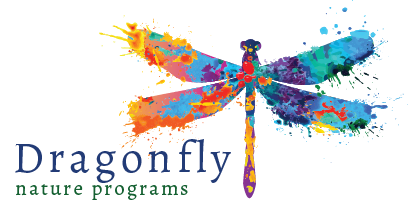I wish I had started birding before the advent of the smart phone. Birding apps that I rely on pretty heavily include eBird, Merlin and Chirp! (and there are others to try if you are interested). Without a doubt, these apps have supported my learning and my ability to identify birds in the field. They have limited the number of field guides I pack out. More often than not they stay home as dog-eared reference guides. (Although I love my Sibley Field Guide and recommend it.)
eBird is a project of the Cornell University Lab of Ornithology used to enable the collection of real time bird data from citizen scientists like myself. This data helps us understand the migration of birds, changes in populations, and the effects of climate change. It supports conservation efforts and legislation to protect our environment. I love that I get to contribute to such a worthy cause.
But it also makes me feel like I need to identify every bird I see and to record my sightings. In some ways, this has taken away the casual nature of birdwatching, which is so delightful and calming. If I never knew a bird by name, I could still watch it preen and fly and eat and nest and that would be enough. But with the apps, birding is about lists and records and sharing and can be very competitive and it’s hard not to get caught up in the anxiety of that.
The rambling tracks of the Snow Bunting (Plectrophenx nivalis), found in the dunes near Bonner Bridge. I sat and watched a small group of the these incredible and uncommon visitors before checking out their tracks once they flew off. Lucky to find this beautiful bird!
Last weekend I traveled to Pea Island NWR on the outer banks of NC to watch birds. The man-made freshwater lakes provide habitat for arctic birds come to overwinter, migrating birds requiring respite and nesting birds during breeding season. It was a cold and windy, beautifully sunny day and it was a chance to connect with a small part of an amazing natural phenomenon of congregating birds. With updated smart phone apps and my favorite field guide in tow, I dared to identify as many birds as I could, padding my life list! And yet, with my limited experience, there were only so many birds I could successfully identify and a lot left to learn.
To all the birds I could not name….
I saw you out there, in your winter plumage and bird glory and you made my day!
The big floating mounds of white feathers, bigger than any bird I’ve ever seen, with your heads neatly tucked in your wing to protect you from the cold, I couldn’t tell if you were white pelicans (Pelecanus erythrorhynchos) or tundra swan (Cygnus columbianis). But you were gorgeous in the sunlight.
To all the ducks (and I mean thousands of ducks), in tight groups, all some shade of dark, backlit on the south pond in front of the rising morning sun, I couldn’t see enough detail to know who you were. But wow, your sheer numbers were incredible!
To the American Widgeon (Mareca americana): how cute are you? And let’s face it, if those men hadn’t walked by and told me your name, I would have just been left with the impression of your royal cuteness, pinkish-brown with the buffy forehead! Wow.
Blue-winged teal or green-winged teal (Annas crecca)? More experienced birders than I can tell you apart in your winter plumage. I had to rely on the help of a generous fisherman who stopped on his walk back to his car to help me identify you. I’m not sure I would have even have come up with a teal if it hadn’t been for him.
Oh Scaups. Lesser (Aythya affinis) or greater, the difference is 1.5 inches. Whichever you were, you were a sight to see with that stark white side and gray back, greenish head and blue bill. A lady asked me if I knew which one you were. I did not. I wasn’t as helpful to her as others had been to me that day.
The day was a good one, and I am grateful for the experience. I fulfilled a promise to myself to get out of my safe birding bubble of common songbirds. And I was reminded what it feels like to be a beginner, to give myself grace for all the things I do not know (and may never). Ultimately I had to acknowledge just how far I’ve come as a birder in a short time (thanks to the smart phone and the smart people I’ve met). Being the student informs me as a teacher. And for just a small part of my week, I got to dip my toe in the larger-than-life, global phenomenon that is bird migration! What a joy it is to remind myself that I am a part of it and it is a part of me.
Tundra Swans and White Pelicans are easy to tell apart. Unless they’re at a distance and tucking their heads into back feathers for warmth. Then they are both just balls of white.
Tundra Swans are migrants from the Arctic. There they breed in the summer, but fly south around mid-September and can be found along the coast of the mid-Atlantic all winter.
Look at a range map for the American White Pelican and it will tell you they shouldn’t be in North Carolina at all. But the Carolina Bird Club reports that sightings on our NC coast are becoming more and more common, a testament to the importance of reporting occurrences on apps like eBird.
“Information from the All About Birds website, www.allaboutbirds.org, © Cornell Lab of Ornithology.” Photo credit: Gordon Dimig, Macauley Library, Illinois, 8/1/2014 & Ian Davies, Macauley Library, Alaska, 7/12/2013



